How Can The Active Release Technique
Help You in Pensacola?
Do you know what the active release technique is? It’s a technique that at the time of writing has been in use for over three decades. Active release technique is sometimes just called ART. Either way, it treats the soft tissues of the body through a combination of movement and manipulation.
ART involves the identification, isolation, and targeting of affected areas in order to break up a person’s scar tissue. After that happens, you should have better blood flow that promotes injuries to heal faster. The Active Release Technique can be used for the treatment of problems with body parts such as ligaments, muscles, nerves, and tendons.
Dr. P. Michael Leahy was the chiropractor who first used this technique in treating the soft tissue disorders of elite athletes. Since then, active release technique has been used for the treatment of millions of folks by massage therapists, chiropractors, physical therapists, and physicians. Any of these service providers might use ART in treating headaches, back pain, and many other symptoms caused by injuries and conditions of the soft tissue.
 Active release technique can be used for the treatment of pain or other various symptoms related to damage or injury to many different body parts. They include the fascia, primary muscle groups, ligaments, and tendons.
Active release technique can be used for the treatment of pain or other various symptoms related to damage or injury to many different body parts. They include the fascia, primary muscle groups, ligaments, and tendons.
In the case of fascia, it’s fibrous connective tissue which supports and protects organs and muscles throughout the human body. Inflammation that happens across a band of fascia tissue might cause serious stiffness and pain. One frequent fascia tissue condition that you might know about is the one called plantar fasciitis.
In regards to primary or major muscle groups, pulls and strains from trauma or overuse can happen anywhere in your body. This could be in your hamstrings, calves, and quads, but it can also happen in your neck, arms, shoulders, and back.
Ligaments and tendons can also be impacted, since tendons are what connect muscles to bones, and ligaments connect bones to each other. Injury to either one of these can decrease your range of motion and cause pain.
Active release technique can treat many different conditions under the supervision or application of the right medical professional, such as a chiropractor. They include but are not limited to lower back pain, tension headaches, carpal tunnel syndrome, sciatic nerve pain, and bursitis. It can also be used for things like tennis elbow, the aforementioned plantar fasciitis, shin splints, shoulder strains like frozen shoulder, and chronic neck pain.
The way that active release technique works is by breaking up adhesions. These are densified accumulations of scar tissue which form anytime there are injuries to connective tissues and muscles. When any scar tissue winds up binding up between the muscles, flexibility becomes limited, which causes stiffness and pain in joints and muscles. Adhesions can even occasionally entrap nerves as well. Active release technique manipulates the soft tissues in such a way that adhesions are broken up to the point that nerves, joints, and muscles can move freely once more.
If you go through an active release technique session, then your healthcare provider is going to feel the area so they can identify where the scar tissue is located. They will use this technique in order to isolate and then target the impacted area. Their manipulation should break up any scar tissue so that proper blood flow is restored to an area in order to facilitate healing.
There are many symptoms that might indicate you have scar tissue. While diagnosis can only be officially done by a healthcare professional, such as a doctor or a chiropractor. Stiffness that you notice in your back, knees, hands, elbow, or neck might indicate that active release technique could be beneficial to you. So too can any increased pain you suffer while exercising.
If you have a sharp pain towards the bottom of either foot, especially near the heel, then you might want to get checked out. Tingling, numbness, and especially pain in your fingers are worth looking into, as is a limited range of motion or reduced flexibility in any part of your body. Inflamed joints, decreased strength, weakness, numbness, or tingling anywhere should also all get looked at.
Active release technique involves high-precision pressure, and it can get quite painful. As such, if your pain tolerance is low, you might discover that a treatment session is not going to be comfortable for you. Fortunately, it can work in just one session for many patients, although some need additional sessions.
If you’ve ever had deep-tissue massage work done, it’s quite similar, even if not totally identical. Your ability to withstand heavy pressure on a massage table should be a good indicator of whether or not active release technique is right for you. As always, only get this or any other treatment from a qualified health or medical professional.
